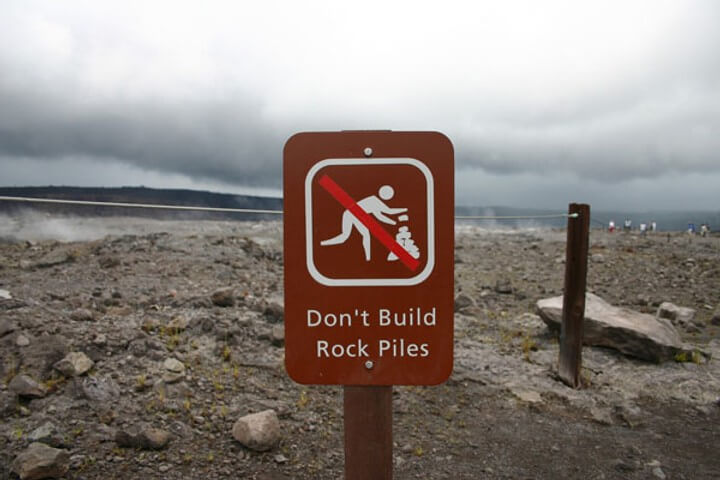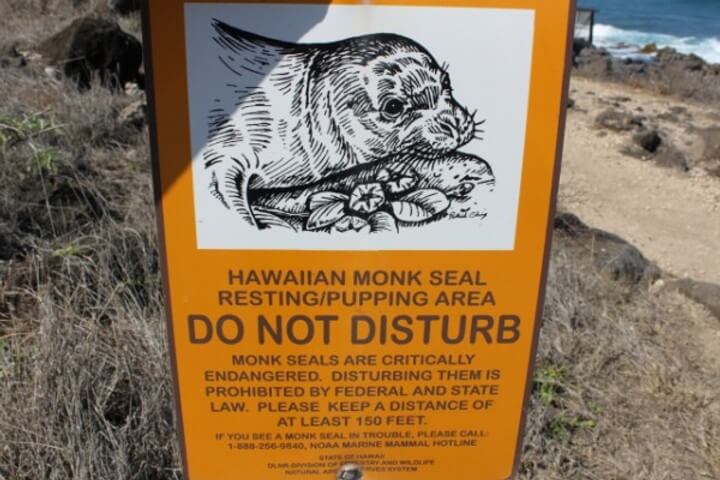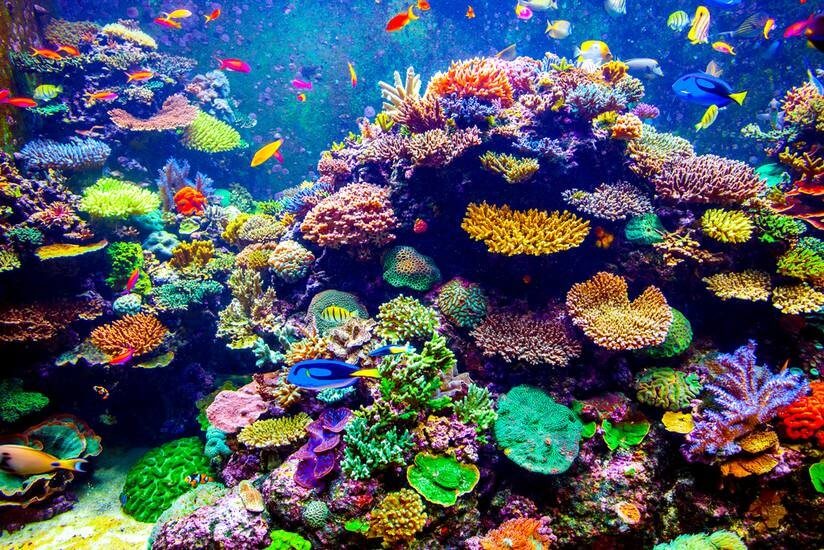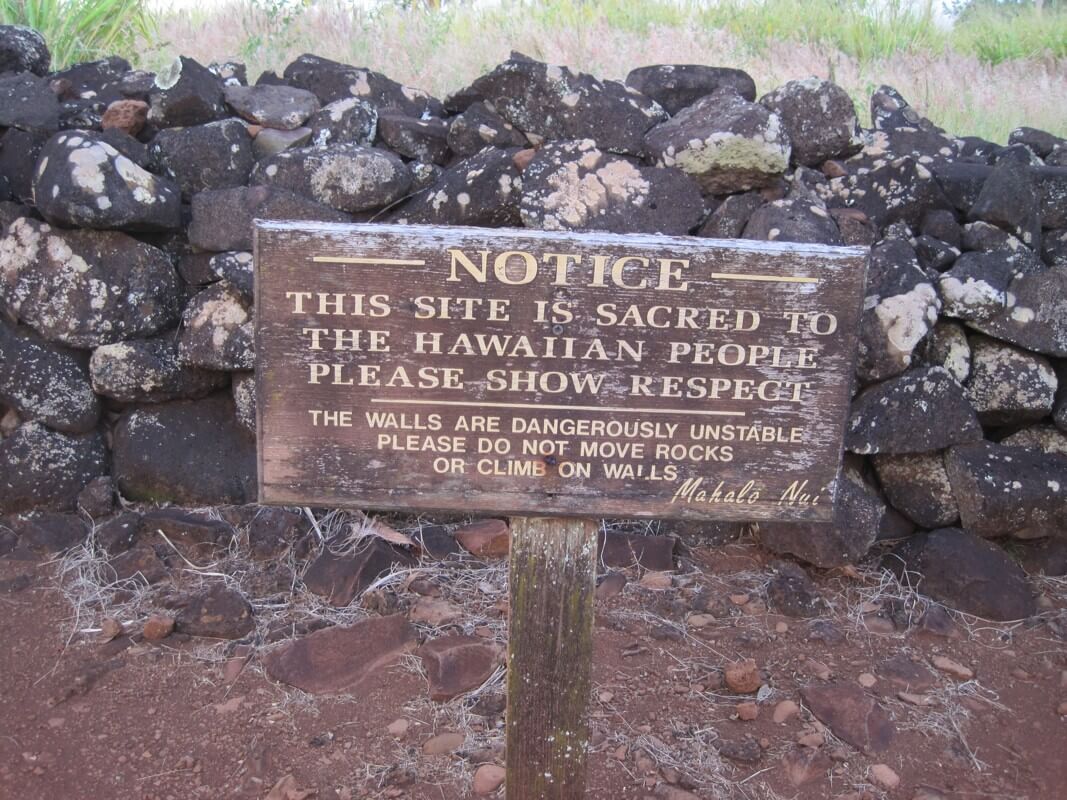When traveling to new places, it is important to be respectful of the culture in the place you are visiting. Cultural sensitivity starts with an awareness of, and appreciation for, the differences and similarities that exist between cultures. Attention must be given to the geography, beliefs, and value systems specific to that culture, for which the development of different behaviors, languages, and social preferences can be attributed.
Hawaiian people greatly honor the land, which they feel deeply connected with. When asking local people in Hawaiʻi what they want to see from guests when visiting the islands, you will almost always find “Aloha ʻāina” (to love and respect the land) as first on the list. Here are the most effective ways to malama ʻāina (care for and nurture the land):
-
Leave places better than you found them. Whether spending a day on the hiking trail or on the beach, always be sure to pack out everything that you packed in. Do not leave any ʻōpala (rubbish/garbage/trash) behind. Items are often left behind unintentionally that can be harmful to plants and wildlife. Do not purposefully alter the landscape in hopes to leave your mark, by stacking rocks, organizing washed up coral, or by carving or writing on trees, rock or soil walls. Leave only footprints. If you see debris left behind by previous visitors, or that have washed up on shore, make it a point to take those items away as well. Leaving a place in better condition than you found it, is the best way to say “mahalo” for the beautiful memories you have created there.

Photo Credit: https://www.hawaiimagazine.com
-
Donʻt touch the wildlife! Many Hawaiian species are endangered. This unfortunate circumstance is often due to human impact to their environment. The best way to protect them is to let them be. Do not interact with native wildlife. Honor their space, and appreciate them from a distance. Whether it be on land, or in the ocean, please use 50 yards as a general rule of thumb when observing local wildlife. Not only because you could be facing a heavy fine, but because it is the best way to respect the animalʻs only home and it is the right thing to do.

Photo Credit: https://www.hawaiilife.com
-
Everything is not a souvenir. Keep in mind that souvenirs should be something purchased or something gifted. It may be tempting to take home a small lava rock or handful of white, green, red, or black sand, but please donʻt do it. Millions of visitors come to Hawaiʻi each year. If every person felt entitled to take a handful of natural resources for themselves, there would be little left. Taking away natural resources can impact not only the ecosystem, but the dignity of a place. Many Hawaiians revere the mana (energy or lifeforce) within every part of the land. Visitors can honor the culture by refraining from removing the rocks, sand, and local flora. Enjoy the beauty of Hawaiʻi’s lavascapes, multicolored beaches, and forested mountains, but leave them in Hawaiʻi.
-
Watch where you step. Coral reef endangerment in Hawaiʻi has become a great environmental issue. People stepping on the coral is a huge factor when it comes to the condition of our coral reefs. Lightly stepping on coral, even for a moment, can seriously harm or kill the reef. The depletion of these beautiful animals is directly associated with the decrease in tropical fish populations. Nearly half the fish that the world depends on come from coral reefs. Use a snorkel mask to watch where you are swimming and stepping, and by doing so you will help protect Hawaiʻi’s beauty, marine diversity, and sustainability!

Photo Credit: https://media.fromthegrapevine.com/
-
Look for permission. This can be applied in several ways. The first is to be mindful about where your adventures take you. Private and sacred lands often border public parks and hiking trails. Always observe marked areas and stay on the trails. Secondly, it is important to observe sacred areas within a space that is considered or marked as “public.” Many public parks and beaches were developed around areas that have much cultural, historical, and spiritual significance. To visitorʻs these areas may look like a pile of rocks, but could actually be ancient heiau, or places of worship. If you see an area that is roped off, signage reading “kapu” (prohibited), or that indicates a sacred space in any other way, keep your distance. Lastly, seek permission from the land itself. Do not go head first into any situation or place. Stop, observe, and appreciate the area around you, and take your time. This will give you the opportunity to identify potential dangers around you (heavy surf, riptides, or muddy and unstable slopes), and it will also make hidden treasures more apparent. If you stop to contemplate the place before you visit, you will gain a natural feeling of responsibility towards the land and a more meaningful experience.

Photo Credit: https://www.ponokaiownerrentals.com/
No matter where you are traveling, some good ways to ensure you are being respectful of any culture, is to do your homework, be aware of your behavior and surroundings, make friends with the locals, be a safe and respectful visitor, and donʻt be afraid to ask questions.
As your local Hawaiʻi experts, our team is here to guide you through any cultural questions you may have, so donʻt hesitate to ask us when you or your group is preparing to visit our islands!
References:
https://www.hipmunk.com/tailwind/how-to-be-a-respectful-tourist-anywhere-in-the-world/
https://www.govisithawaii.com/2007/08/20/minding-your-manners-in-hawaii/
http://www.wpcouncil.org/protected-species/
